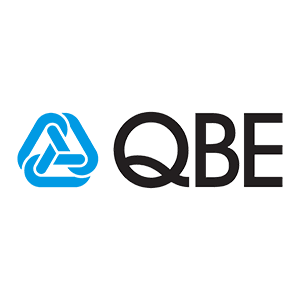Lenders’ mortgage insurance myths and must-knows for first home buyers

We're busting the most common myths – and giving you the info you need to know – about LMI.

 Sponsored by QBE – helping customers learn more about lenders' mortgage insurance (LMI). Learn more on Finder's LMI hub, brought to you by QBE Insurance. Providing LMI since 1965.
Sponsored by QBE – helping customers learn more about lenders' mortgage insurance (LMI). Learn more on Finder's LMI hub, brought to you by QBE Insurance. Providing LMI since 1965.
Lenders' mortgage insurance (LMI) can help you own a home sooner, as it allows you to buy a home with less than 20% deposit.
A number of myths have grown around LMI, so before you apply for your first mortgage, it's important to understand what it is and why it's important.
Myth #1: LMI only benefits the finance company
Now, if you're a borrower, paying for insurance coverage that doesn't directly benefit you might seem like a waste of money.
And it is true that LMI is used to protect the lender against undue risk.
But it's not true that it only benefits the lender. In practice, LMI helps lenders grant home loans to borrowers earlier, because you don't need to wait to save a full 20% deposit.

Must-know #1: LMI can help you get onto the property ladder sooner
Without LMI, lenders would likely be far more selective with who they lend to.
Additionally, the cost of LMI can usually be incorporated into the loan itself, rather than being a standalone charge. Borrowers don't find themselves out of pocket as soon as they opt for a loan.
"By covering the lender's risk, LMI allows more people to get a home loan that may otherwise be unachievable," says Pat Priest, General Manager of LMI at QBE Insurance.
"It can help you achieve the dream of home ownership a lot sooner than you thought was possible. It allows you to get into your home, start building equity and working on your financial future a lot earlier."

Buying a home in 2022? Here are 5 questions to ask yourself
SPONSORED: If you're buying in 2022, ask yourself these key questions.
Read more…Myth #2: All mortgages – and LMI – are created equal
Buying your first home can be complex. The finance industry is often jargon-heavy and inaccessible to the new borrower.
This means some first-time buyers can slip into the trap of assuming that all mortgages – and by extension, LMI – are fundamentally the same.
But this isn't quite the case.
For example, some lenders provide greener finance options, to lead to more sustainable financial and environmental outcomes.
According to the 2022–2025 Housing Outlook: Green Edition, commissioned by QBE LMI, there's been a recent expansion of green home loan offerings.
Typically, these allow borrowers access to discounted interest rates if they buy, build or renovate an eco-friendly home.
Criteria vary from lender to lender, but there will usually be qualifiers, like having LMI in conjunction with a green mortgage*, or having solar panels, solar hot water or long-term battery storage.
Must-know #2: The cost of LMI is determined by the size of your deposit
While there are a number of different factors that influence the cost of LMI, the main considerations are the size of the mortgage and the size of your deposit.
The more you're borrowing and the less you have saved, the greater a "risk" you may be to a prospective lender. For instance, a 10% deposit and a $600,000 loan is going to attract a higher premium than a 15% deposit on a $600,000 loan.
The cost of LMI can usually be folded into the loan itself, too. Generally, you won't need to pay the cost upfront.
To calculate the approximate cost of LMI, you can use the LMI Premium Calculator.

Myth #3: It's harder to get a loan approved with LMI
It's an interesting time to be a borrower. It's understandable that some are nervous about applying for a loan if they know they'll require LMI.
Surely a lender is more likely to turn them down if they're a greater risk on paper?
Well, no.
Some people think that to get a loan approved with LMI is harder than one without. But generally, this isn't the case, because the criteria for a home loan is aligned with LMI.
Rather, the problems tend to come when borrowers are trying to avoid LMI altogether. Not wanting to outlay additional money at the start of the process is understandable, but LMI is generally included within the cost of the loan itself, so it shouldn't present a major issue.
"At times some participants in the process look to find ways to avoid paying LMI," says Priest. "Unfortunately, this idea causes potential borrowers to delay their purchase or loan."
Must-know #3: Having LMI can make getting a mortgage easier
In truth, LMI is a means to mitigate risk for the lender. It actually improves your appeal with the lender, because they have another layer of risk protection.
It's important to remember that lenders will be looking for the usual considerations too.
LMI can help borrowers that don't have a 20% deposit. It helps mitigate the risk for the lender. It actually enables borrowers to get a foot on the property ladder in conjunction with other tools, rather than being a catch-all solution.
For a home loan, you'll still need to show that you have good credit, a solid pattern of savings and the ability to service the loan.

Myth #4: I won't have to pay LMI again for future loans
LMI isn't necessarily a one-and-done affair.
If you refinance or take out a mortgage again in the future, you may need to pay LMI if you don't have 20% of the home's value in equity or savings.
Some lenders may waive part of the premium, if you have a pre-existing policy with them.
But they may still require LMI to be included as part of the refinancing process to minimise the risk.
Visit the QBE LMI hub to learn more about LMI today.
Compare home loans from QBE's partner lenders
| Lenders | |||
|---|---|---|---|
 |  | ||
 |  | ||
 |  | ||
 |  | ||
 |  | ||
 | |||
 |  | ||
 | |||
 |  | ||
 | |||
 |  | ||
 |  | ||
 |  | ||
 | |||
 |  | ||
 | |||
 |  | ||
 |  | ||
 |  | ||
 |
